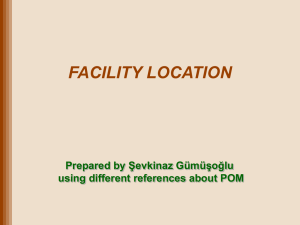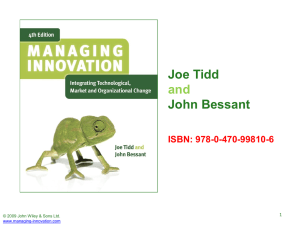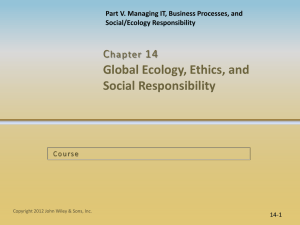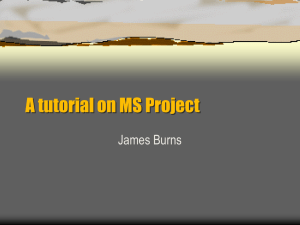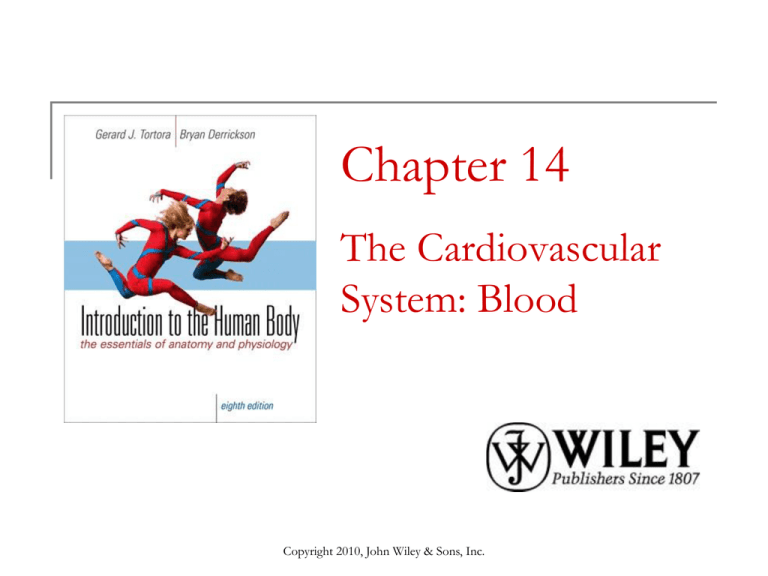
Chapter 14
The Cardiovascular
System: Blood
Copyright 2010, John Wiley & Sons, Inc.
Functions
Transportation: water, gases, nutrients,
hormones, enzymes, electrolytes, wastes,
heat
Regulation: pH, temperature, water balance
Protection: blood clotting, defense:
phagocytic cells, interferons, complement
Copyright 2010, John Wiley & Sons, Inc.
Composition
A connective tissue with components readily
seen when blood is centrifuged:
Plasma(~55%): soluble materials (mostly
water); lighter so at top of tube
Formed elements (~45%): cells (heavier so at
bottom of tube)
Mostly red blood cells (RBCs)
Percent of blood occupied by RBCs = hematocrit (Hct)
Normal hematocrit value: 42-47%
Females: 38 to 46%; males: 40 to 54%
Buffy coat: site of white blood cells (WBCs), platelets
Copyright 2010, John Wiley & Sons, Inc.
Composition
Copyright 2010, John Wiley & Sons, Inc.
Composition
Copyright 2010, John Wiley & Sons, Inc.
Plasma: Liquid Portion of Blood
Water: 91.5%
Plasma proteins: 7%
Albumin (54%): function in osmosis; carriers
Globulins (38%): serve as antibodies
Fibrinogen (7%): important in clotting
Other: 1.5%
Electrolytes, nutrients, gases, hormones,
vitamins, waste products
Copyright 2010, John Wiley & Sons, Inc.
Formed Elements
I. Red Blood Cells (RBCs)
II. White blood cells (WBCs)
A. Granular leukocytes
1. Neutrophils
2. Eosinophils
3. Basophils
B. Agranular leukocytes
1. Lymphocytes and natural killer (NK) cells
2. Monocytes
III Platelets
Copyright 2010, John Wiley & Sons, Inc.
Formation of Blood Cells
Called hemopoiesis or hematopoiesis
Occurs throughout life
In response to specific hormones, stem cells
undergo a series of changes to form blood cells
Pluripotent stem cells in red marrow
Lymphoid stem cells lymphocytes (in lymphatic
tissues)
Myeloid stem cells all other WBCs, all RBCs,
and platelets (in red bone marrow)
Copyright 2010, John Wiley & Sons, Inc.
Formation of Blood Cells
Copyright 2010, John Wiley & Sons, Inc.
Formation of
Blood Cells
Copyright 2010, John Wiley & Sons, Inc.
Erythrocytes (RBCs)
Hemoglobin (red pigment)
RBC count: about 5 million/µl
Carries 98.5% of O2 and 23% of CO2
Male: 5.4 million cells/µl; female: 4.8 million/µl
Structure of mature RBC
No nucleus/DNA so RBCs live only 3 to 4 mos
Lack of nucleus causes biconcave disc shape with
extensive plasma membrane
Provides for maximal gas exchange
Is flexible for passing through capillaries
Copyright 2010, John Wiley & Sons, Inc.
RBC Recycling
Cleared by macrophages (liver and spleen)
Recycled components
Globin amino acids recycled to form proteins
Heme broken down into:
Fe
Carried in blood by transferrin (“protein escort” of Fe)
Recycled in bone marrow for forming synthesis of new
hemoglobin; proteins and vitamin B12 required also
Non-Fe portion of heme biliverdin bilirubin
Bilirubin to liver bile helps absorb fats
Intestinal bacteria convert bilirubin into other chemicals
that exit in feces (stercobilin) or urine (urobilin)
Copyright 2010, John Wiley & Sons, Inc.
Formation and Destruction of RBC’s
Circulation for about
120 days
7
3
Reused for
protein synthesis
Amino
acids
Globin
4
6
5
Fe3+
Fe3+ Transferrin
2 Heme
Fe3+
Ferritin
Transferrin
Bilirubin
9
1 Red blood cell
Biliverdin
Bilirubin
11
10
death and
phagocytosis
Small
intestine
Kidney
13
12
Urobilin
Macrophage in
spleen, liver, or
red bone marrow
Bilirubin
Urobilinogen
Stercobilin
Urine
Liver
+
Globin
+
Vitamin B12
+
Erythopoietin
8 Erythropoiesis in
red bone marrow
Bacteria
Key:
in blood
Large 14
intestine
Feces
Copyright 2010, John Wiley & Sons, Inc.
in bile
RBC Synthesis: Erythropoiesis
Develop from myeloid stem cells in red
marrow
Cells lose nucleus; are then released into
bloodstream as reticulocytes
These almost-mature RBCs develop into erythrocytes
after 1-2 days in bloodstream
High reticulocyte count (> normal range of 0.5% to
1.5% as more of these circulate in bloodstream)
indicates high rate of RBC formation
Copyright 2010, John Wiley & Sons, Inc.
RBC Synthesis: Erythropoiesis
Production and destruction: normally
balanced
Stimulus for erythropoiesis is low O2 delivery
(hypoxia) in blood passing to kidneys
Kidneys release erythropoietin release (EPO)
Stimulates erythropoiesis in red marrow
increased O2 delivery in blood (negative
feedback mechanism)
Copyright 2010, John Wiley & Sons, Inc.
RBC Synthesis: Erythropoiesis
Signs of lower-than-normal RBC count
changes in skin, mucous membranes, and
finger nail beds
Cyanosis: bluish color
Anemia: pale color
Copyright 2010, John Wiley & Sons, Inc.
Regulation of
Erythropoiesis
Copyright 2010, John Wiley & Sons, Inc.
White Blood Cells (WBCs or Leukocytes)
Appear white because lack hemoglobin
Normal WBC count: 5,000-10,000/µl
WBC count usually increases in infection
Two major classes based on presence or
absence of granules (vesicles) in them]
Granular: neutrophils, eosinophils, basophils
Neutrophils usually make up 2/3 of all WBCs
Agranular: lymphocytes, monocytes
Major function: defense against
Infection and inflammation
Antigen-antibody (allergic) reactions
Copyright 2010, John Wiley & Sons, Inc.
White Blood Cell Functions
Neutrophils: first responders to infection
Monocytes macrophages (“big eaters”)
Phagocytosis
Release bacteria-destroying enzyme lysozyme
Known as wandering macrophages
Eosinophils
Phagocytose antibody-antigen complexes
Help suppress inflammation of allergic reactions
Respond to parasitic infections
Copyright 2010, John Wiley & Sons, Inc.
White Blood Cell Functions
Basophils
Intensify inflammatory responses and allergic
reactions
Release chemicals that dilate blood vessels:
histamine and serotonin; also heparin
(anticoagulant)
Copyright 2010, John Wiley & Sons, Inc.
White Blood Cell Functions
Lymphocytes
Three types of lymphocytes
T cells
B cells
Natural killer (NK) cells
Play major roles in immune responses
B lymphocytes respond to foreign substances called
antigens and differentiate into plasma cells that
produce antibodies. Antibodies attach to and
inactivate the antigens.
T lymphocytes directly attack microbes.
Copyright 2010, John Wiley & Sons, Inc.
White Blood Cell Functions
Major histocompatibility (MHC) antigens
Proteins protruding from plasma membrane of
WBCs (and most other body cells)
Called “self-identity markers”
Unique for each person (except for identical twins)
An incompatible tissue or organ transplant is rejected
due to difference in donor and recipient MHC antigens
MHC antigens are used to “type tissues” to check for
compatibility and reduce risk of rejection
Copyright 2010, John Wiley & Sons, Inc.
WBC Life Span
WBCs: 5000-10,000 WBCs/µl blood
RBCs outnumber WBCs about 700:1
Life span: typically a few hours to days
Abnormal WBC counts
Leukocytosis: high WBC count in response to
infection, exercise, surgery
Leukopenia: low WBC count
Differential WBC count: measures % of
WBCs made up of each of the 5 types
Copyright 2010, John Wiley & Sons, Inc.
Platelets
Myeloid stem cells megakaryocytes
2000–3000 fragments = platelets
Normal count: 150,000-400,000/µl blood
Functions
Plug damaged blood vessels
Promote blood clotting
Life span 5–9 days
Copyright 2010, John Wiley & Sons, Inc.
Hemostasis: “Blood Standing Still”
Sequence of events to avoid hemorrhage
1. Vascular spasm
Response to damage
Quick reduction of blood loss
2. Platelet plug formation
Platelets become sticky when contact damaged
vessel wall
3. Blood clotting (coagulation)
Series of chemical reactions involving clotting
factors
Copyright 2010, John Wiley & Sons, Inc.
Blood Clotting (Coagulation)
Extrinsic pathway
Intrinsic Pathway
Tissue factor(TF) from damaged cells 1 2 3
Materials “intrinsic” to blood 1 2 3
Common pathway: 3 major steps
1. Prothrombinase
2. Prothrombin thrombin
3. Fibrinogen fibrin clot
Ca++ plays important role in many steps
Copyright 2010, John Wiley & Sons, Inc.
Clot Retraction and Vessel Repair
Clot plugs ruptured area
Gradually contracts (retraction)
Pulls sides of wound together
Repair
Fibroblasts replace connective tissue
Epithelial cells repair lining
Copyright 2010, John Wiley & Sons, Inc.
Hemostatic Control Mechanisms
Fibrinolysis: breakdown of clots by plasmin
Inappropriate (unneeded) clots
Inactivated plasminogen
Activated (by tPA) plasmin
Clots can be triggered by roughness on vessel
wall = thrombosis
Loose (on-the-move) clot = embolism
Anticoagulants: decrease clot formation
Heparin
Warfarin (Coumadin)
Copyright 2010, John Wiley & Sons, Inc.
(a) Extrinsic pathway
Stages
of
Clotting
Tissue trauma
(b) Intrinsic pathway
Blood trauma
Damaged
endothelial cells
expose collagen
fibers
Tissue
factor
(TF)
Damaged
platelets
Activated XII
Activated
platelets
Ca2+
Ca2+
+
Platelet
phospholipids
Activated X Activated X
V
1
Ca2+
Ca2+
V +
PROTHROMBINASE
(c) Common
pathway
Ca2+
Prothrombin
(II)
THROMBIN
Ca2+
2
XIII
Fibrinogen
(I)
Activated XIII
Loose fibrin
threads
STRENGTHENED
FIBRIN THREADS
3
Copyright 2010, John Wiley & Sons, Inc.
Blood Groups and Blood Types
RBCs have antigens (agglutinogens) on their
surfaces
Each blood group consists of two or more
different blood types
There are > 24 blood groups
Two examples:
ABO group has types A, B, AB, O
Rh group has type Rh positive (Rh+), Rh negative (Rh–)
Blood types in each person are determined
by genetics
Copyright 2010, John Wiley & Sons, Inc.
ABO Group
Two types of antigens on RBCs: A or B
Type A has only A antigen
Type B has only B antigen
Type AB has both A and B antigens
Type O has neither A nor B antigen
Most common types in US: type O and A
Typically blood has antibodies in plasma
These can react with antigens
Two types: anti-A antibody or anti-B antibody
Blood lacks antibodies against own antigens
Type A blood has anti-B antibodies (not anti-A)
Type AB blood has neither anti-A nor anti-B antibodies
Copyright 2010, John Wiley & Sons, Inc.
ABO Group
Copyright 2010, John Wiley & Sons, Inc.
Rh Blood Group
Name Rh: antigen found in rhesus monkey
Rh blood types
If RBCs have Rh antigen: Rh+
If RBCs lack Rh antigen: Rh–
Rh+ blood type in 85-100% of U.S. population
Normally neither Rh+ nor Rh– has anti-Rh
antibodies
Antibodies develop in Rh- persons after first
exposure to Rh+ blood in transfusion (or
pregnancy hemolytic disease of newborn)
Copyright 2010, John Wiley & Sons, Inc.
Transfusions
If mismatched blood (“wrong blood type”)
given, antibodies bind to antigens on RBCs
hemolyze RBCs
Type AB called “universal recipients”
because have no anti-A or anti-B antibodies
so can receive any ABO type blood
Type O called “universal donors” because
have neither A nor B antigen on RBCs so can
donate to any ABO type
Misleading because of many other blood groups
that must be matched
Copyright 2010, John Wiley & Sons, Inc.
End of Chapter 14
Copyright 2010 John Wiley & Sons, Inc.
All rights reserved. Reproduction or translation of
this work beyond that permitted in section 117 of the
1976 United States Copyright Act without express
permission of the copyright owner is unlawful.
Request for further information should be addressed
to the Permission Department, John Wiley & Sons,
Inc. The purchaser may make back-up copies for
his/her own use only and not for distribution or
resale. The Publishers assumes no responsibility
for errors, omissions, or damages caused by the use
of theses programs or from the use of the
information herein.
Copyright 2010, John Wiley & Sons, Inc.





